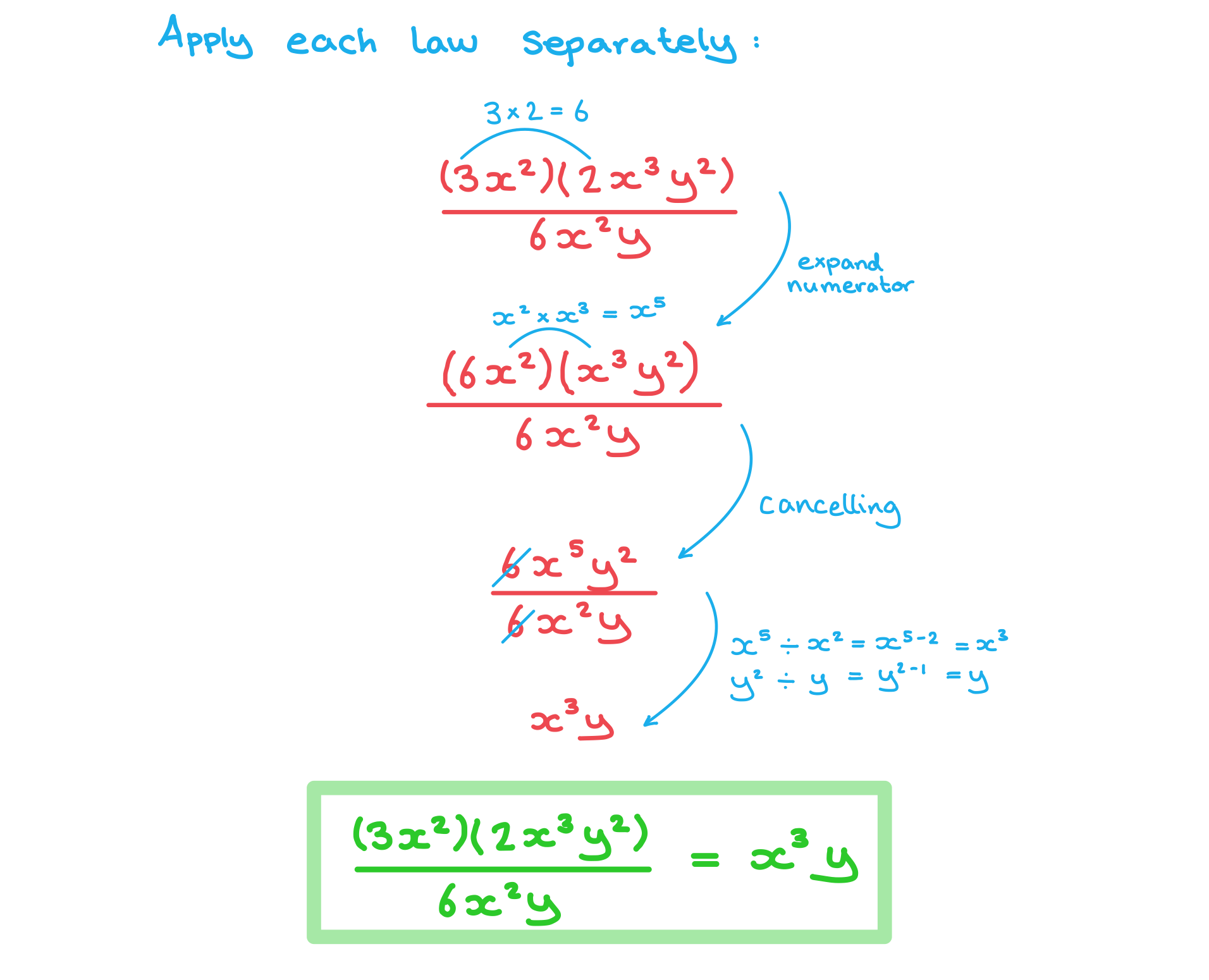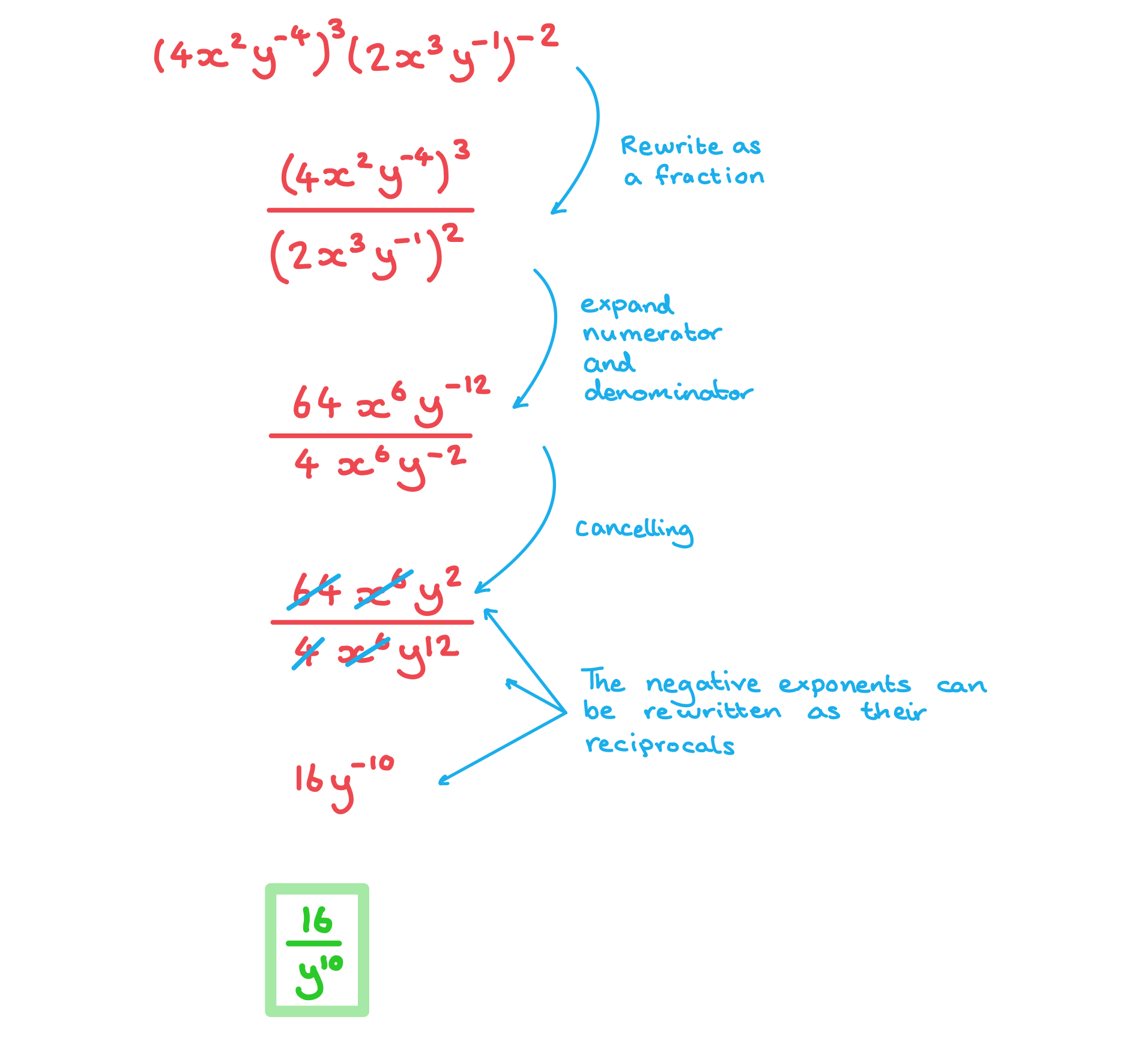Exponents & Logarithms (DP IB Applications & Interpretation (AI)) : Revision Note
Did this video help you?
Laws of Indices
What are the laws of indices?
Laws of indices (or index laws) allow you to simplify and manipulate expressions involving exponents
An exponent is a power that a number (called the base) is raised to
Laws of indices can be used when the numbers are written with the same base
The index laws you need to know are:
These laws are not in the formula booklet so you must remember them
How are laws of indices used?
You will need to be able to carry out multiple calculations with the laws of indices
Take your time and apply each law individually
Work with numbers first and then with algebra
Index laws only work with terms that have the same base, make sure you change the base of the term before using any of the index laws
Changing the base means rewriting the number as an exponent with the base you need
For example,
Using the above can them help with problems like
Examiner Tips and Tricks
Index laws are rarely a question on their own in the exam but are often needed to help you solve other problems, especially when working with logarithms or polynomials
Look out for times when the laws of indices can be applied to help you solve a problem algebraically
Worked Example
Simplify the following equations:
i) .

ii) .

Did this video help you?
Introduction to Logarithms
What are logarithms?
A logarithm is the inverse of an exponent
If
then
where a > 0, b > 0, a ≠ 1
This is in the formula booklet
The number a is called the base of the logarithm
Your GDC will be able to use this function to solve equations involving exponents
Try to get used to ‘reading’ logarithm statements to yourself
would be read as “the power that you raise
to, to get
, is
”
So
would be read as “the power that you raise 5 to, to get 125, is 3”
Two important cases are:
Where e is the mathematical constant 2.718…
This is called the natural logarithm and will have its own button on your GDC
Logarithms of base 10 are used often and so abbreviated to log x
Why use logarithms?
Logarithms allow us to solve equations where the exponent is the unknown value
We can solve some of these by inspection
For example, for the equation 2x = 8 we know that x must be 3
Logarithms allow use to solve more complicated problems
For example, the equation 2x = 10 does not have a clear answer
Instead, we can use our GDCs to find the value of
Examiner Tips and Tricks
Before going into the exam, make sure you are completely familiar with your GDC and know how to use its logarithm functions
Worked Example
Solve the following equations:
i)
,

ii)
, giving your answer to 3 s.f.


You've read 0 of your 5 free revision notes this week
Unlock more, it's free!
Did this page help you?